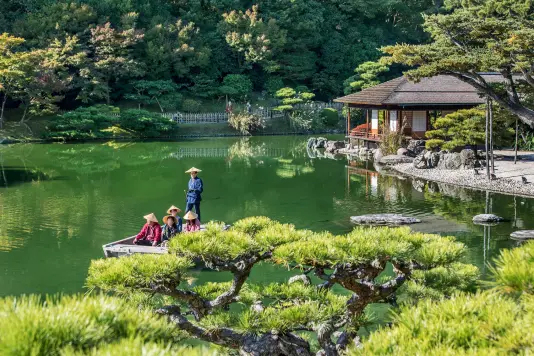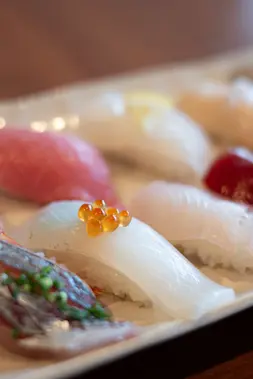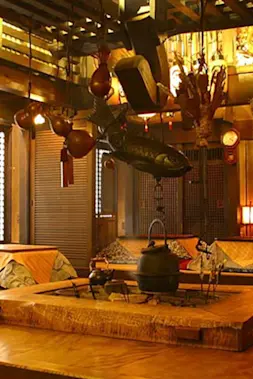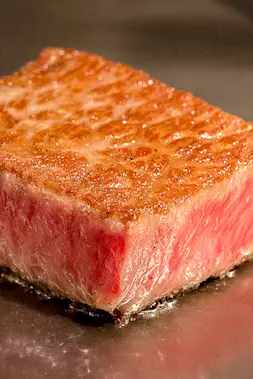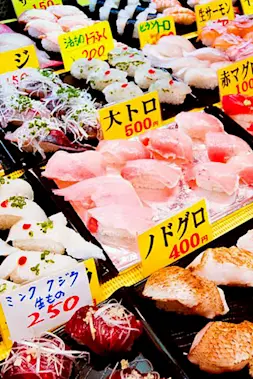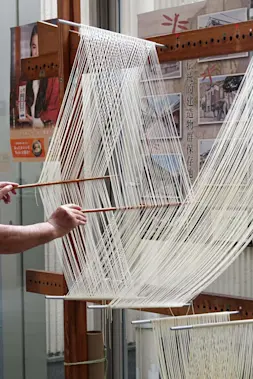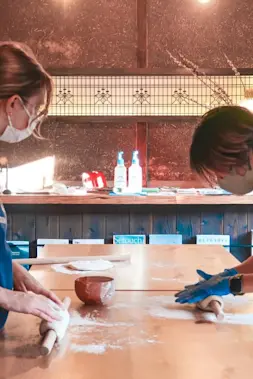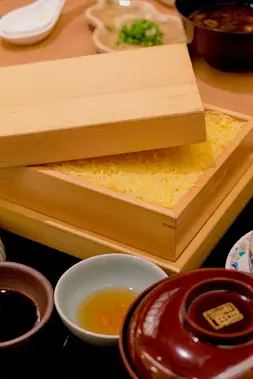Food & Drink
Auberge de Oishi - A Mediterranean Hideaway in Setouchi

-
- DESTINATION NAME
- Kagawa
-
- RELATED TAGS
-
- LAST UPDATED
- 16 October, 2019
In French, auberge means inn. “In France people will travel to distant, famous restaurants to enjoy their cuisine. And French lunches will often last three or four hours, so people tend to stay overnight.” The maître d explains when I ask, “People stay in auberge?”
The name of the restaurant I’m visiting is Auberge de Oishi – Inn of Delicious. It’s a hotel and restaurant, built in a style reminiscent of houses around the Mediterranean, overlooking Japan’s equivalent — the Seto Inland Sea, near the city of Takamatsu on Shikoku island. The lunches here don’t last three or four hours, but, as I was to discover, they are definitely worth the trip.
I had arrived a little early to avoid the lunch rush. A little off-the-beaten-track, some describe Auberge de Oishi as “the hidden Setouchi restaurant,” as it requires a private set of wheels, or taxi, to reach. The gleaming, white walls of the entrance, and the smooth, clay tiles inside reminded me a little of Greece. The restaurant is set immaculately with ivory table cloths, shimmering wine glasses, and polished silverware. Classical music plays softly. The maître d pulls out my chair, and I sit, making sure to keep my back straight, elbows in. The atmosphere is sophisticated and I don’t want to seem out of place.
The menu has recently changed to accommodate autumnal ingredients. Some dishes incorporate deer meat from Kumamoto, while others have oysters from Hokkaido.
“Are the ingredients generally local?” I ask, knowing that this is often a point of pride in many Japanese restaurants.
“We, of course, use some,” the maître d replies, “Sanuki olives from the nearby islands for example, and fresh Setouchi fish. But the chef believes that we should use delicious ingredients from anywhere within Japan, or even abroad. If it’s good, we should use it.”
I look over the menu choices. The most lavish is the “Chef’s Choice” menu, where foie gras in sweet, red wine sauce and thinly sliced duck breast in basil sauce are entrées, and black abalone is one of the options for a main course. I go for the slightly less extravagant Menu A, with three vegetable entrées, the fish or meat of the day, dessert, and coffee.
A waitress pours me a glass of Perrier and leaves the bottle on the table to cast its alluring, green shadow, and brings out a wonderfully aromatic, non-alcoholic Sangria bursting with citrusy flavors.
The first course is a pear puree with a consommé jelly on top, presented in a beautiful, crystal glass, the flavor light and savory. The second course was a circle of pureed avocado with papaya, garnished with a sprig of lettuce, and placed alongside a row of artfully arranged, softly steamed vegetables. Some black pepper inside the lettuce crunches deliciously, and disappears as quickly as the first course. Perhaps to slow me down, the waitress places a fresh, hot bread roll by my elbow, along with a small bowl of local olive oil and olives.
“Are these dishes a French/Japanese fusion?” I ask.
“We aim to stay true to the original French recipes,” She explains, “For example, recently a lot of French dishes have started to change, become healthier, and incorporate ingredients like soy sauce or wasabi. The chef avoids that, and makes sauces that he learned while studying in France, however he adapts them to the Japanese palate. Rather than just copy everything straight from France, the chef wants to make a restaurant that Japanese people can relax in and enjoy.”
The next course is potato gratin, deeply creamy, very hot, and with a perfect amount of saltiness and umami, spreading like a warm, flavorful blanket through my mouth. This is followed by a small bowl of potato soup which is delicious with its unexpectedly slightly sour flavor.
Finally, the fish of the day arrives — squid stuffed with butter rice, covered in a sauce of pureed eggplant and capers, with slices of roasted vegetables. The squid is melt-in-your-mouth soft, and the capers add a tiny sour burst from within the savory, buttery flavors.
To top the meal off, a waiter rolls out a dessert tray, complete with tiramisu, pear tart, sherbet, persimmon jelly, crème brûlée, and fig shortcake. My choice, the crème brûlée, pairs perfectly with an excellent cappuccino, and cracks satisfyingly beneath my spoon.
The whole experience ends far too soon, and I’m left wishing I could spend another three or four more hours enjoying this lunch.
Photographs & Text by Felicity Tillack
RELATED DESTINATION
Kagawa
This is an area with many islands, including Naoshima and Teshima, which are famous for art. It also is home to the tasteful Ritsurin Garden. Kagawa is also famous for its Sanuki udon, which is so famous it attracts tourists from throughout Japan. The prefecture is even sometimes referred to as “Udon Prefecture.” [Photo : “Red Pumpkin” ©Yayoi Kusama,2006 Naoshima Miyanoura Port Square | Photographer: Daisuke Aochi]
